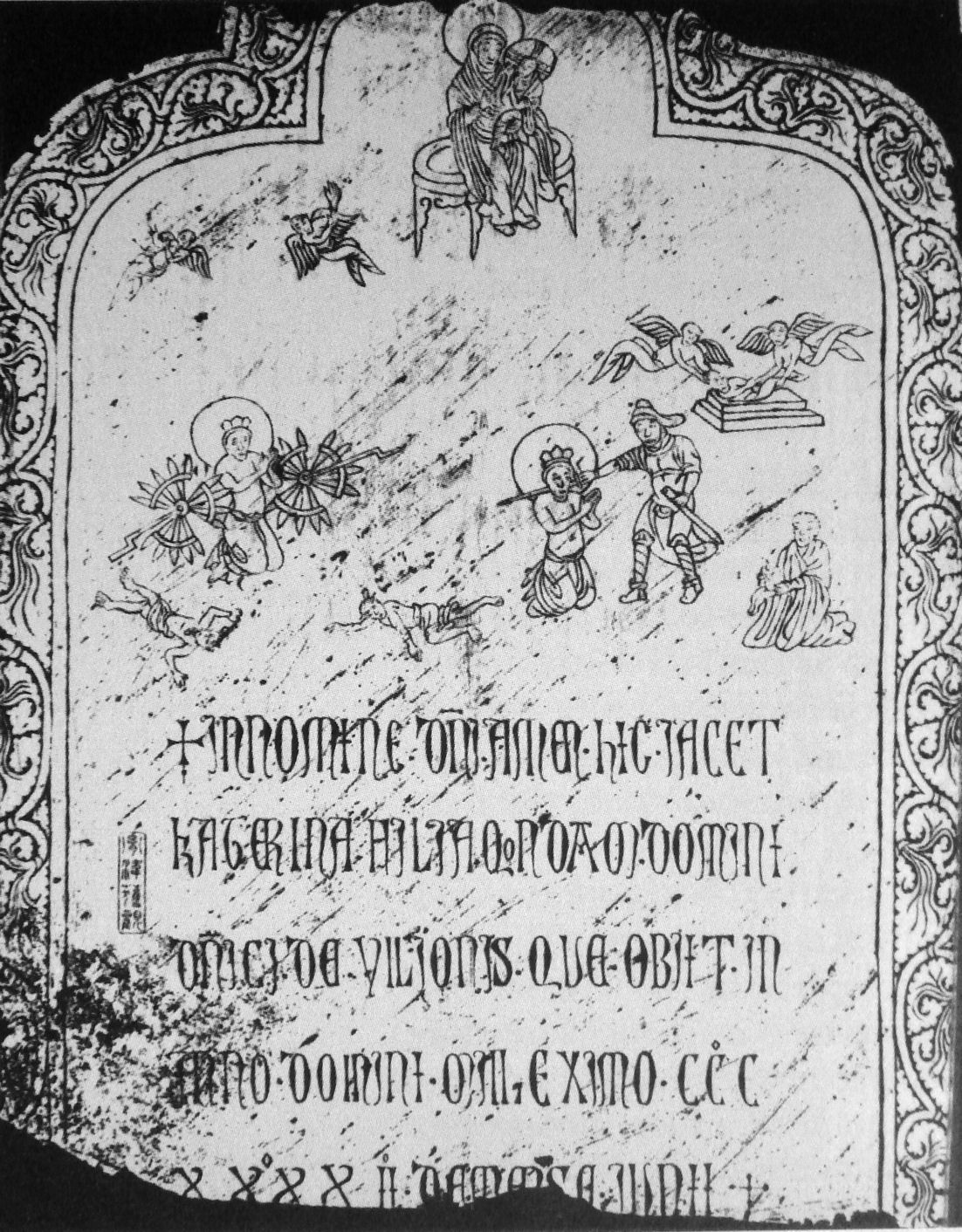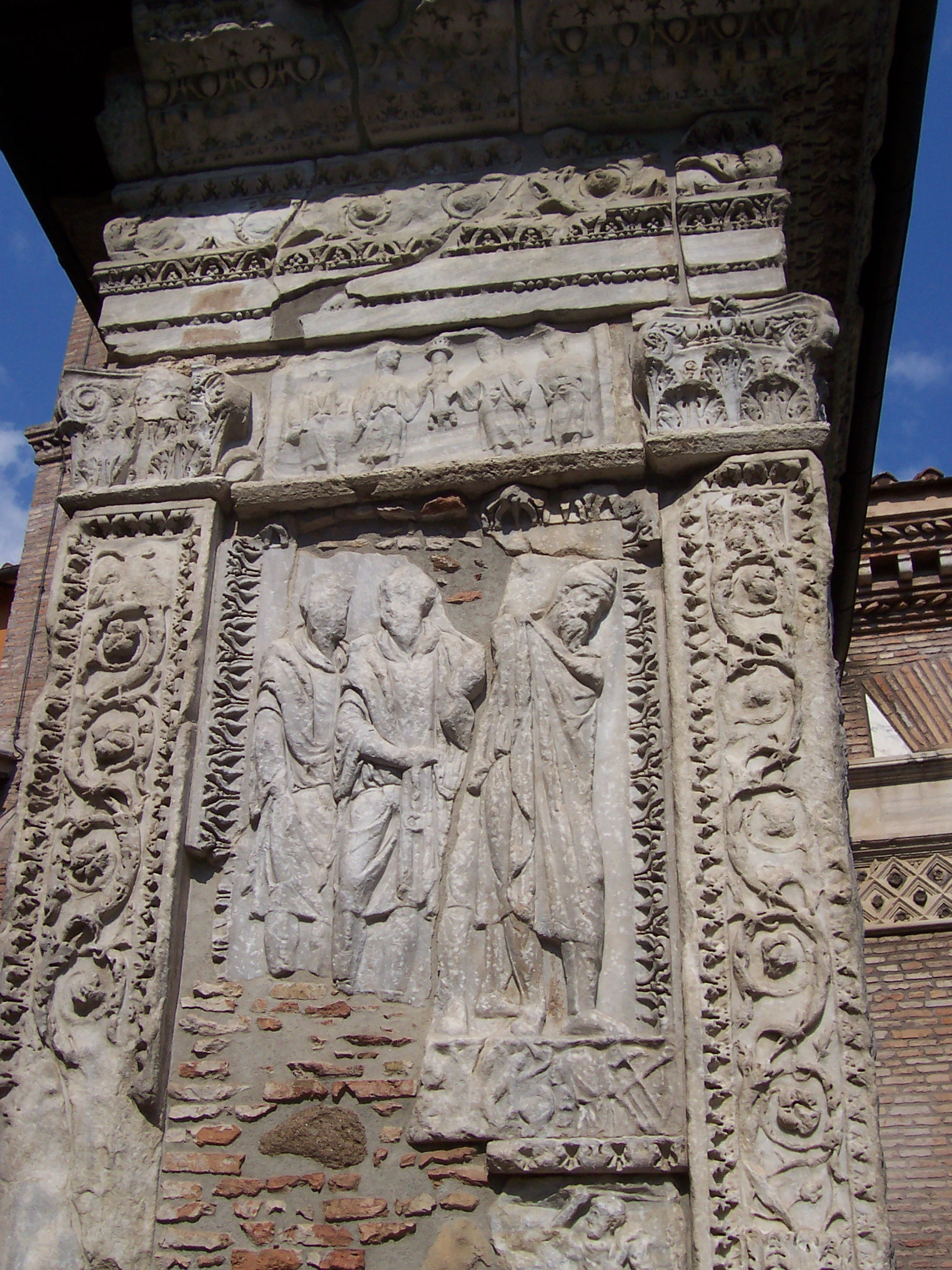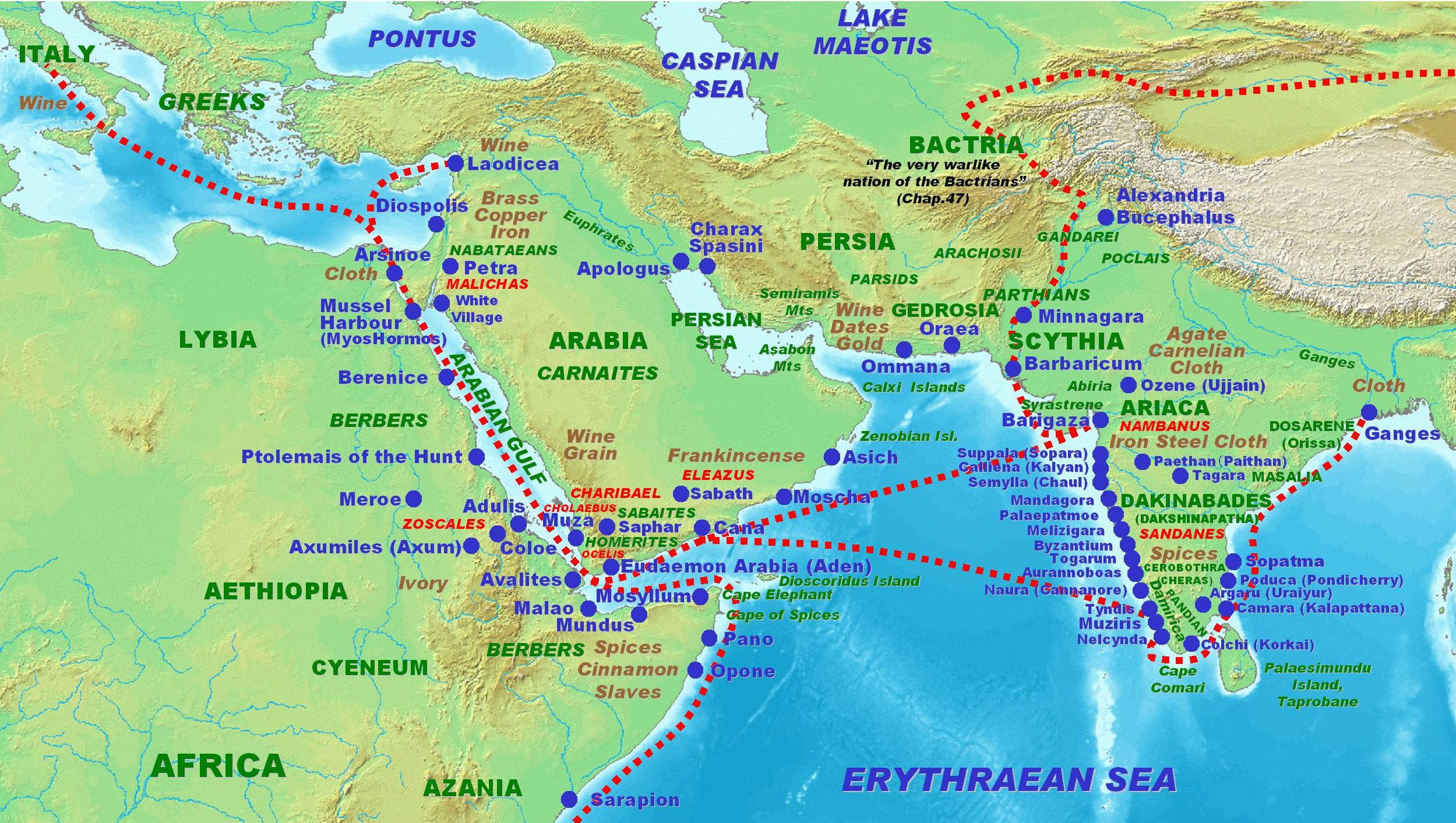|
Daqin
Daqin (; alternative transliterations include Tachin, Tai-Ch'in) is the ancient Chinese name for the Roman Empire or, depending on context, the Near East, especially Syria. It literally means "Great Qin"; Qin () being the name of the founding dynasty of the Chinese Empire. Historian John Foster defined it as " the Roman Empire, or rather that part of it which alone was known to the Chinese, Syria". Its basic facets such as laws, customs, dress, and currency were explained in Chinese sources. Its medieval incarnation was described in histories during the Tang dynasty (618–907 AD) onwards as ''Fulin'' (), which Friedrich Hirth and other scholars have identified as the Byzantine Empire. Daqin was also commonly associated with the Syriac-speaking Nestorian Christians who lived in China during the Tang dynasty. Chinese sources describe several ancient Roman embassies arriving in China, beginning in 166 AD and lasting into the 3rd century. These early embassies were said to ar ... [...More Info...] [...Related Items...] OR: [Wikipedia] [Google] [Baidu] [Amazon] |
Sino-Roman Relations
Between the Roman Empire and the Han dynasty, as well as between the later Eastern Roman Empire and various successive Chinese dynasties, there were (primarily indirect) contacts and flows of trade goods, information, and occasional travelers between. These empires inched progressively closer to each other in the course of the Roman expansion into ancient Western Asia and of the simultaneous Han military incursions into Central Asia. Mutual awareness remained low, and firm knowledge about each other was limited. Surviving records document only a few attempts at direct contact. Intermediate empires such as the Parthians and Kushans, seeking to maintain control over the lucrative silk trade, inhibited direct contact between the two ancient Eurasian powers. In 97 AD, the Chinese general Ban Chao tried to send his envoy Gan Ying to Rome, but Parthians dissuaded Gan from venturing beyond the Persian Gulf. Ancient Chinese historians recorded several alleged Roman emissaries ... [...More Info...] [...Related Items...] OR: [Wikipedia] [Google] [Baidu] [Amazon] |
Europeans In Medieval China
Given textual and archaeological evidence, it is thought that thousands of Europeans lived in History of China#Imperial China, Imperial China during the Yuan dynasty. These were people from countries traditionally belonging to the lands of Christendom during the High Middle Ages, High to Late Middle Ages who visited, traded, performed Christian missionary work, or lived in China. This occurred primarily during the second half of the 13th century and the first half of the 14th century, coinciding with the rule of the Mongol Empire, which ruled over a large part of Eurasia and connected Europe with their Chinese dominion of the Yuan dynasty. Whereas the Byzantine Empire centered in Greece and Anatolia maintained rare incidences of correspondence with the Tang dynasty, Tang, Song dynasty, Song and Ming dynasty, Ming dynasties of China, the Holy See sent several missionaries and embassies to the early Mongol Empire as well as to Khanbaliq (modern Beijing), the capital of the Mongol-le ... [...More Info...] [...Related Items...] OR: [Wikipedia] [Google] [Baidu] [Amazon] |
Silk Road
The Silk Road was a network of Asian trade routes active from the second century BCE until the mid-15th century. Spanning over , it played a central role in facilitating economic, cultural, political, and religious interactions between the Eastern world, Eastern and Western worlds. The name "Silk Road" was coined in the late 19th century, but some 20th- and 21st-century historians instead prefer the term Silk Routes, on the grounds that it more accurately describes the intricate web of land and sea routes connecting Central Asia, Central, East Asia, East, South Asia, South, Southeast Asia, Southeast, and West Asia as well as East Africa and Southern Europe. The Silk Road derives its name from the highly lucrative trade of silk textiles that were History of Silk, primarily produced in China. The network began with the expansion of the Han dynasty (202 BCE220 CE) into Central Asia around 114 BCE, through the missions and explorations of the Chinese imperial env ... [...More Info...] [...Related Items...] OR: [Wikipedia] [Google] [Baidu] [Amazon] |
Jiaozhi
Jiaozhi (standard Chinese, pinyin: ''Jiāozhǐ''), or , was a historical region ruled by various Chinese dynasties, corresponding to present-day northern Vietnam. The kingdom of Nanyue (204–111 BC) set up the Jiaozhi Commandery (; , chữ Hán: 郡交趾) an administrative division centered in the Red River Delta that existed through Vietnam's first and second periods of Chinese rule. During the Han dynasty, the commandery was part of a province of the same name (later renamed to Jiaozhou) that covered modern-day northern and central Vietnam as well as Guangdong and Guangxi in southern China. In 670 AD, Jiaozhi was absorbed into the Annan Protectorate established by the Tang dynasty. Afterwards, official use of the name Jiaozhi was superseded by "Annan" (Annam) and other names of Vietnam, except during the brief fourth period of Chinese rule when the Ming dynasty administered Vietnam as the Jiaozhi Province. Name Chinese chroniclers assigned various folk et ... [...More Info...] [...Related Items...] OR: [Wikipedia] [Google] [Baidu] [Amazon] |
Tang Dynasty
The Tang dynasty (, ; zh, c=唐朝), or the Tang Empire, was an Dynasties of China, imperial dynasty of China that ruled from 618 to 907, with an Wu Zhou, interregnum between 690 and 705. It was preceded by the Sui dynasty and followed by the Five Dynasties and Ten Kingdoms period. Historians generally regard the Tang as a high point in Chinese civilisation, and a Golden age (metaphor), golden age of cosmopolitan culture. Tang territory, acquired through the military campaigns of its early rulers, rivalled that of the Han dynasty. The House of Li, Li family founded the dynasty after taking advantage of a period of Sui decline and precipitating their final collapse, in turn inaugurating a period of progress and stability in the first half of the dynasty's rule. The dynasty was formally interrupted during 690–705 when Empress Wu Zetian seized the throne, proclaiming the Wu Zhou dynasty and becoming the only legitimate Chinese empress regnant. The An Lushan rebellion (755 ... [...More Info...] [...Related Items...] OR: [Wikipedia] [Google] [Baidu] [Amazon] |
Nestorianism
Nestorianism is a term used in Christian theology and Church history to refer to several mutually related but doctrinary, doctrinarily distinct sets of teachings. The first meaning of the term is related to the original teachings of Christian theologian Nestorius (), who promoted specific doctrines in the fields of Christology and Mariology. The second meaning of the term is much wider, and relates to a set of later theological teachings, that were traditionally labeled as Nestorian, but differ from the teachings of Nestorius in origin, scope and terminology. The ''Oxford English Dictionary'' defines Nestorianism as:"The doctrine of Nestorius, Patriarch of Constantinople (appointed in 428), by which Christ is asserted to have had distinct human and divine persons."Original Nestorianism is attested primarily by works of Nestorius, and also by other theological and historical sources that are related to his teachings in the fields of Mariology and Christology. His theology was infl ... [...More Info...] [...Related Items...] OR: [Wikipedia] [Google] [Baidu] [Amazon] |
Roman Empire
The Roman Empire ruled the Mediterranean and much of Europe, Western Asia and North Africa. The Roman people, Romans conquered most of this during the Roman Republic, Republic, and it was ruled by emperors following Octavian's assumption of effective sole rule in 27 BC. The Western Roman Empire, western empire collapsed in 476 AD, but the Byzantine Empire, eastern empire lasted until the fall of Constantinople in 1453. By 100 BC, the city of Rome had expanded its rule from the Italian peninsula to most of the Mediterranean Sea, Mediterranean and beyond. However, it was severely destabilised by List of Roman civil wars and revolts, civil wars and political conflicts, which culminated in the Wars of Augustus, victory of Octavian over Mark Antony and Cleopatra at the Battle of Actium in 31 BC, and the subsequent conquest of the Ptolemaic Kingdom in Egypt. In 27 BC, the Roman Senate granted Octavian overarching military power () and the new title of ''Augustus (title), Augustus'' ... [...More Info...] [...Related Items...] OR: [Wikipedia] [Google] [Baidu] [Amazon] |
Roman Commerce
Roman commerce was a major sector of the Roman economy during the later generations of the Republic and throughout most of the imperial period. Fashions and trends in historiography and in popular culture have tended to neglect the economic basis of the empire in favor of the lingua franca of Latin and the exploits of the Roman legions. The language and the legions were supported by trade and were part of its backbone. The Romans were businessmen, and the longevity of their empire was caused by their commercial trade. Whereas in theory members of the Roman Senate and their sons were restricted when engaging in trade, the members of the equestrian order were involved in businesses despite their upper-class values, which laid the emphasis on military pursuits and leisure activities. Plebeians and freedmen held shop or manned stalls at markets, and vast numbers of slaves did most of the hard work. The slaves were themselves also the subject of commercial transactions. Probably becau ... [...More Info...] [...Related Items...] OR: [Wikipedia] [Google] [Baidu] [Amazon] |
History Of The Byzantine Empire
The Byzantine Empire's history is generally periodised from late antiquity until the Fall of Constantinople in 1453 AD. From the 3rd to 6th centuries, the Greek East and Latin West of the Roman Empire gradually diverged, marked by Diocletian's (r. 284–305) formal partition of its administration in 285, the establishment of an eastern capital in Constantinople by Constantine I in 330, and the adoption of Christianity as the state religion under Theodosius I (r. 379–395), with others such as Religion in ancient Rome, Roman polytheism being Christian persecution of paganism under Theodosius I, proscribed. Although the Western half of the Roman Empire had collapsed in 476, the Eastern half remained stable and emerged as one of the most powerful states in Europe, a title it held for most of its existence. Under the reign of Heraclius (r. 610–641), the Empire's military and administration were restructured and adopted Greek for official use instead of Latin. While there was an unbro ... [...More Info...] [...Related Items...] OR: [Wikipedia] [Google] [Baidu] [Amazon] |
Indo-Roman Trade Relations
Indo-Roman trade relations (see also the spice trade and incense road) was trade between the Indian subcontinent and the Roman Empire in Europe and the Mediterranean Sea. Trade through the overland caravan routes via Asia Minor and the Middle East, though at a relative trickle compared to later times, preceded the southern trade route via the Red Sea, which started around the beginning of the Common Era (CE), following the reign of Augustus and his conquest of Egypt in 30 BCE. The southern route so helped enhance trade between the ancient Roman Empire and the Indian subcontinent, that Roman politicians and historians are on record decrying the loss of silver and gold to buy silk to pamper Roman wives, and the southern route grew to eclipse and then totally supplant the overland trade route. Roman and Greek traders frequented the ancient Tamil country, present day Southern India and Sri Lanka, securing trade with the seafaring Tamil states of the Pandyan, Chola and Chera d ... [...More Info...] [...Related Items...] OR: [Wikipedia] [Google] [Baidu] [Amazon] |
History Of The Roman Empire
The history of the Roman Empire covers the history of ancient Rome from the traditional end of the Roman Republic in 27 BC until the abdication of Romulus Augustulus in AD 476 in the West, and the Fall of Constantinople in the East in 1453. Ancient Rome became a territorial empire while still a republic, but was then ruled by Roman emperor, emperors beginning with Augustus, Octavian Augustus, the final victor of the Crisis of the Roman Republic, republican civil wars. Rome had begun expanding shortly after the founding of the Republic in the 6th century BC, though it did not expand outside the Italian Peninsula until the 3rd century BC, during the Punic Wars, after which the Republic expanded across the Mediterranean. Civil war engulfed Rome in the mid-1st century BC, first between Julius Caesar and Pompey, and finally between Augustus, Octavian (Caesar's grand-nephew) and Mark Antony. Antony was defeated at the Battle of Actium in 31 BC, leading to the annexa ... [...More Info...] [...Related Items...] OR: [Wikipedia] [Google] [Baidu] [Amazon] |
Southeast Asia
Southeast Asia is the geographical United Nations geoscheme for Asia#South-eastern Asia, southeastern region of Asia, consisting of the regions that are situated south of China, east of the Indian subcontinent, and northwest of the Mainland Australia, Australian mainland, which is part of Oceania. Southeast Asia is bordered to the north by East Asia, to the west by South Asia and the Bay of Bengal, to the east by Oceania and the Pacific Ocean, and to the south by Australia (continent), Australia and the Indian Ocean. Apart from the British Indian Ocean Territory and two out of Atolls of the Maldives, 26 atolls of the Maldives in South Asia, Maritime Southeast Asia is the only other subregion of Asia that lies partly within the Southern Hemisphere. Mainland Southeast Asia is entirely in the Northern Hemisphere. Timor-Leste and the southern portion of Indonesia are the parts of Southeast Asia that lie south of the equator. The region lies near the intersection of Plate tectonics, ... [...More Info...] [...Related Items...] OR: [Wikipedia] [Google] [Baidu] [Amazon] |











